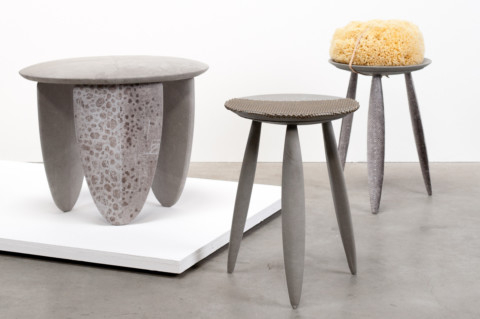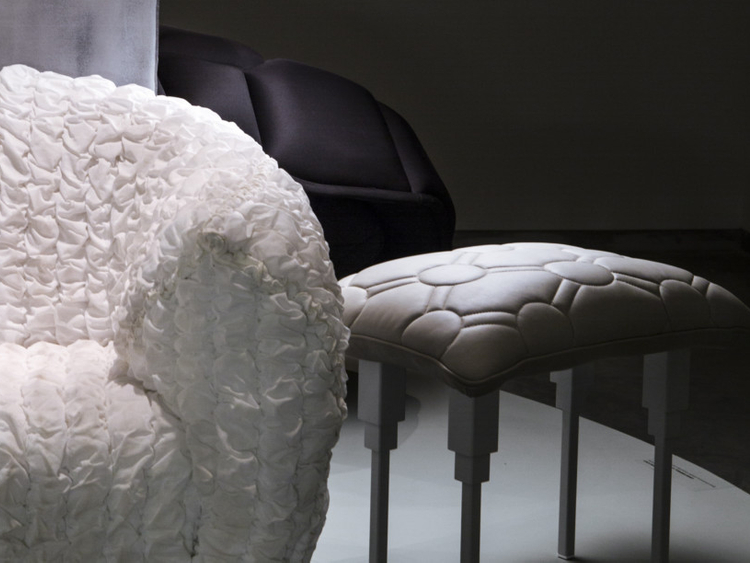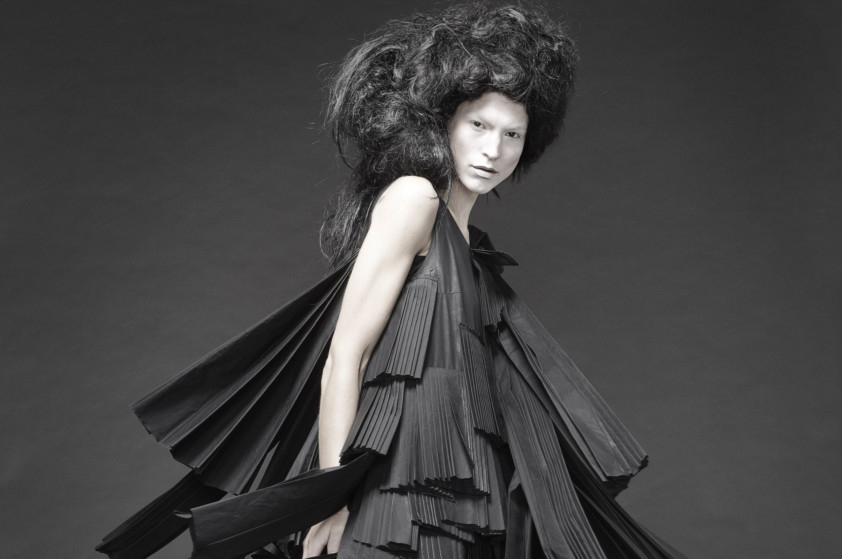
“Emancipation.” Trend forecaster Li Edelkoort singles out the strongest trend emerging from the Middle East in one word.
“Don’t tell me you’re surprised,” she says in an exclusive interview. “Just look around you. The tragedies, the upheavals — people need respite. The need for a different future is arguably nowhere as strong as in the Middle East.”
As a result, Edelkoort predicts a subtle move away from black. Expect tonal greys, deep blues and burgundies until the colour palette tides over to a lighter spectrum. “I see these shifts coming from regional designers,” she says as she launches Edelkoort Arabia — the Middle Eastern outpost of her Paris-based company Trend Union. “We’ve already seen the Middle East, India and the Far East inform the looks of western designers via colours, silhouettes or embellishments. As these economies continue to grow, designers — and not just materials and techniques — from the region are bound to be courted.”
“I’m glad the government is putting money into building the local design community,” she notes of the advancement since she first visited the region a few years ago, but insists a grass-roots level approach will serve the region in the longer run. Need leads to innovation; historically it’s been designers who have come from nothing that’ve led to seismic shifts in the design world.
In a community of expats and a huge economic-social cross-section, Edelkoort’s call can’t be ignored. “People here need world-class design museums and schools with equal opportunities for all.”
When it comes to trend prediction, intuition is key, says Edelkoort. “We all have it [but] we either ignore it or not listen to it. I’ve always been intuitive and I’ve seen that as I accept my intuition and thank it, it grows stronger.”
The spiritual facet of Edelkoort’s work is then backed with an in depth research into social, economic, political and cultural happenings.
Edelkoort’s reports for the lifestyle and design industries are released two years ahead of impact and take around six months to prepare. Predictions for the service sector, banks, technology, automobile and urban infrastructure markets are presented 5 to 20 years in advance. Edelkoort Arabia will afford the Middle East a never-before opportunity to identify trends emerging from the region, nurture them and influence the world.
Edelkoort found herself at the epicentre of an ever-changing trends world in part, by accident. Her costume designs for a fête in her native Netherlands were criticised by the local press for not being “carnival” enough. When they later saw the same look — micro-minis with shorts underneath — stomp down Parisian runways they came back acknowledging she was onto something.
“I enrolled in the Artez vocational school but found guiding other students, putting their looks together, more exciting than working on my own designs. I wasn’t good at illustrations anyway.” Her faculty encouraged her to study history of fashion, design and arts.
Recently Edelkoort made international headlines as she announced the death of fashion. “I love fashion, so to see this happen pains me no end.”
Her sentiment mirrors the present design market. Rebellious designers such as Dior, Lacroix and Galliano have been replaced with a generation of designers propelled by meticulously crafted PR and marketing campaigns.
No one is ruffling feathers like McQueen did. Established labels would rather build on the existing brand DNA or present surface trends of colour and silhouettes. Design revolutions are dead; innovation is confined within the padded walls of risk-management.
Design-loving buyers are being disempowered at the hand of sale-driven “merchants”. In-depth reporting and studied design critique too has fallen to celebrity culture and marketing dollars. “Promoting smartphone wielding bloggers isn’t helping build intelligent conversation around fashion or design either, and mainstream magazines offer little understanding.”
In the past, change has come at the hand of new-age designers and novel retailers. Concept stores might just save avant-garde design. “We will see a new generation of designers that will seek out newer ways — be it smaller, concept stores that don’t bow to sales numbers or online portals — that will promote a new vision. It’s already happening; you might find them a bit ‘out there’ right now, but perseverance and hard work still pay off.”
PLEATING
Folding, pleating and tucking lends movement, elasticity and an impeccable yet playful appearance. Pleating’s double role of rigour and release also reflects a social development where people must be structured in order to be let free, contained to be released. The softer, neutral colours that capture the shadows inherent to these techniques are being seen as precursors to the rather light and whitewashed colours for years to come.
QUILTING
The pastime of frugal housewives that dates back to ancient Egypt and spread across Europe through garments worn under the armour of the Crusaders has recently made a comeback. Revived with the massive success of the Bibendum silhouette in fashion, this trend is now influencing the design of bold quilted furniture pieces that spell out a message of protective and reassuring magnitude.
3D FORM
Today, man and machine are able to create beauty from humble means, pushing the boundaries of the third dimension. Rapid prototyping has influenced the design of objects, footwear, garments, jewellery, medical inserts and even architecture and automobiles, showing us that the possibilities are limitless. From creating furniture and fashion objects via the 3D printing modules to harnesses natural resources to power the 3D printers, today’s designers illustrate that one day we will be able to grow design and harvest it fresh for consumption.
ORGANIC FORM
Retracing their rooms, a new generation of designers are, in some ways, going back to the beginning of time. As part of the process, akin to cavemen, they are designing around natural and sustainable materials, favouring timber, hide, pulp, fibre, earth and fire. As a result, organic forms have found prominence in table tops, ceramics and objects that quietly innovate materials and design. Some creatives are experimenting with reversing the process — by first developing 3D printed structures and leaving their works to grow in re-created thermo-mineral caves — leading to man-made natural matter.
METALS
Material is the message in today’s design world with designers looking at both low- and high-tech ways to reinvent the elements with which they work, all the while staying connected to the Earth. One of the major trends in fashion and interiors is the importance of all kinds of metals. It is almost as if consumers have an insatiable thirst for alchemistic alloys. Yet not all metallics are reflective: oxidisation, patina, and worn-off looks are gathering momentum.
— Pratyush Sarup edits the design site designcarrot.net. You can follow the site on twitter @DesignCarrot.











